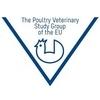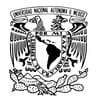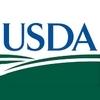Explore all the information on
Avian influenza
Avian influenza is a viral infection found in domestic poultry and a wide range of other birds. Wild waterfowl and shorebirds are often subclinically affected carriers of the virus. In poultry, low-pathogenicity strains can cause subclinical infections; however, some strains typically cause respiratory signs or decreased egg production. Highly pathogenic strains may cause widespread organ failure and sudden death, often with high mortality rates. Diagnosis is based on detection of the viral genome or specific antibodies or on virus isolation. Antimicrobials may help control secondary bacterial infection in flocks affected by low-pathogenicity strains. Antiviral drugs are not approved or recommended. Prevention is best accomplished by biosecurity measures. Vaccines matched for antigenic type can greatly increase resistance to infection, prevent clinical signs, and decrease viral shedding in infected flocks.
Dr. Kateri Bertran (USDA) explained the pros and cons of each method of control during an outbreak in this interview at the Avian Influenza International Seminar 2017 in Buenos Aires, Argentina....
Comments : 7
Recommendations: 4
We at Livestock Industry Foundation for Africa believe that Nigeria should drive a more proactive management approach to the control of Avian influenza epizootics. Nigeria is a potentially high-risk target country vulnerable to Avian influenza possible annual or biannual outbreak (February-April).
The country is a target hob to three out of the four migratory birds routes from South East Asia which are countries that had reportedly reported consistent...
Comments : 0
Recommendations: 1


Low Protein Diets Downregulate Hepatic Enzymes Responsible for Nonessential Amino Acid Synthesis in Broilers
Suggested link
Udi Ashash (Director of Global Technical Services, Phibro Vaccines) explained the effect of migratory birds, and gave recommendations on eradication and vaccination, during the Avian Influenza International Seminar 2017 in Buenos Aires, Argentina....
Comments : 12
Recommendations: 6
Husam Bakri (Vaxxinova) spoke on the risks of avian Influenza and its appearance in combination with IBV or Newcastle, and the importance of good management measures, during IPPE 2018 in Atlanta, USA....
Comments : 64
Recommendations: 15
Matthias Voss (Lohmann Tierzucht) speaks about legislation, zoning and compartmentalization, during the Avian Influenza International Seminar 2017 in Buenos Aires, Argentina....
Comments : 1
Recommendations: 1
1. INTRODUCTION Avian influenza virus (AIV) infects different types of birds, including chickens, causing respiratory or systemic diseases that vary in severity and cause heavy losses to the poultry industry in the world (Goudrazi et al., 2013). This disease is caused by type A influenza virus that belong to family Orthomyxoviridae. To date, 18 H subtypes have been recognized (H1 to H18) and 11 N subtypes (N1 to N11) (Tong et al., 2013). Possibly the most significant problem...
Comments : 0
Recommendations: 5
In previous articles we overviewed different approaches for control of avian influenza in poultry including culling of infected birds , vaccination and the ...
Comments : 4
Recommendations: 1
The United States Department of Agriculture (USDA) announced an agreement with the government of South Korea that significantly reduces negative impacts on trade should another detection of highly pathogenic avian influenza (HPAI) occur in the United States. The agreement will allow for trade restrictions at the state level instead of the country level during any future HPAI detections.
This action bolsters the already strong trade relationship between the United States and South...
Comments : 1
Recommendations: 1
.jpg&w=3840&q=75)

Trends and challenges in Poultry Production: Jonathan Cade, President of Hy-Line International
Suggested link
Findings Avian influenza virus (AIV) is a member of the Orthomyxoviridae family, Influenzavirus A genus . AIV is characterized by its ability to undergo constant antigenic changes [1]. AIV envelope contains two major glycoproteins, hemagglutinin (HA) and neuraminidase (NA) [2]. The HA/NA proteins play a key role during cellular infection. Different HA/NA combinations allow AIV subtype discrimination. Depending on the damage caused to avian species, AIVs are categorized...
Comments : 0
Recommendations: 2
Findings The recent outbreaks of highly pathogenic avian influenza A(H5N1) virus in numerous countries in Asia and Africa and the increase in human cases demonstrate that influenza A viruses remain a global pandemic threat [1,2]. Worldwide, natural migrations of birds and commercialization of poultry product are considered two of the most important mechanisms of disease dispersion [3]. Due to the high risk of the A(H5N1) pandemic threat, multinational efforts have been made to...
Comments : 0
Recommendations: 3
Introduction A novel H7N9 influenza A virus emerged in humans in Eastern China in February of 2013. Cases were often severe and the case fatality rate is approximately 32%. The viral genome was rapidly characterized and was revealed to contain a novel constellation of genes from avian influenza viruses from several Eurasian sublineages most of which had been previously detected in China (Kageyama et al., 2013; Van Ranst and Lemey, 2013; Xiong et al., 2013;...
Comments : 0
Recommendations: 0
...
Comments : 1
Recommendations: 6
Background Avian influenza (AI) virus causes one of the most economically important diseases of poultry worldwide. AI is classified by the world organization for animal health (OIE) into two forms, low pathogenicity (LP) and high pathogenicity (HP), based on virulence in chickens [1]. H7 is one of the two most economically important AI virus subtypes because historically all HP AI viruses have been either the H7 or H5 subtype and it is among the most common subtypes in...
Comments : 2
Recommendations: 1
Important Basics Before disinfecting any surface, make sure it is thoroughly clean. Cleaning is the most important part of the phrase “Cleaning and Disinfection,” or C&D. Disinfectants do not work, or work poorly, if dirt and feces are present. You are wasting your time and money applying disinfectant to dirty surfaces. Thoroughly spray cleaned surfaces with the disinfectant solution. Wash off boots with soap and water (pressurized if available)...
Comments : 4
Recommendations: 2
Background An H5 HPAIV outbreak that began in December 2014 and lasted 6 months through June 2015 was the 5th highly pathogenic avian influenza virus (HPAIV) outbreak in the US since the 1920’s and was the most geographically widespread. Direct and indirect costs to the US economy were estimated to be near $3.3 billion USD [1]. The hemagglutinin (HA) gene was determined to belong to clade 2.3.4.4 of the goose/Guangdong/1996 (GS/GD/96) H5 lineage of HPAIV and was...
Comments : 0
Recommendations: 1
In late November 2014 higher than normal death losses in a meat turkey and chicken broiler breeder farm in the Fraser Valley of British Columbia initiated a diagnostic investigation that led to the discovery of a novel reassortant highly pathogenic avian influenza (HPAI) H5N2 virus. This virus, composed of 5 gene segments (PB2, PA, HA,Mand NS) related to Eurasian HPAI H5N8 and the remaining gene segments (PB1, NP and NA) related to North American lineage...
Comments : 0
Recommendations: 0
Introduction Significant economic losses in the poultry industries due to moderate to high mortality and decreased egg production have resulted from H9N2 low pathogenic avian influenza virus (LPAIV) infections across North Africa, the Middle East and Asia (Fusaro and others 2011, Lee and Song 2013). The currently circulating Eurasian H9N2 LPAIV has rapidly spread to become the most prevalent LPAIV in domestic poultry...
Comments : 0
Recommendations: 1
Introduction Highly pathogenic avian influenza virus (HPAIV) H5N1 persists in natural reservoirs of aquatic birds and waterfowl. In 1996 it was discovered that infected wild geese in Southern China were responsible for transmitting the virus to poultry [1]. In 2003, HPAIV H5N1 began to spread from Southeast Asia to other regions, and in the past decade it has caused numerous outbreaks on poultry farms in over 60 countries in Asia, Africa, and Europe. While the virus remains...
Comments : 0
Recommendations: 2


Low Protein Diets Downregulate Hepatic Enzymes Responsible for Nonessential Amino Acid Synthesis in Broilers
Suggested link
Fidelis Hegngi (Senior Staff Veterinarian, Avian Health at USDA) discussed recent highly pathogenic AI outbreaks in the USA, as well as clinical signs and biosecurity, during the Avian Influenza International Seminar 2017 in Buenos Aires, Argentina....
Comments : 1
Recommendations: 1
















.jpg&w=3840&q=75)
















